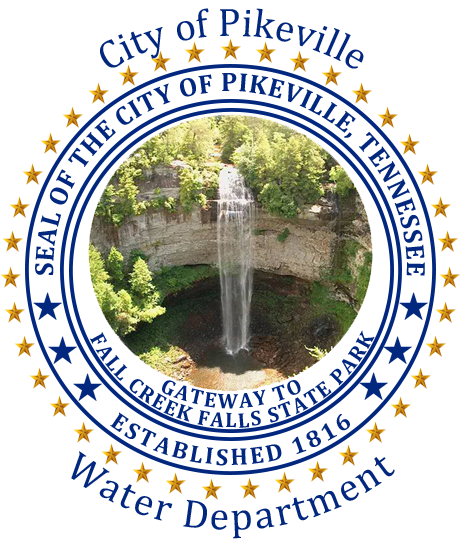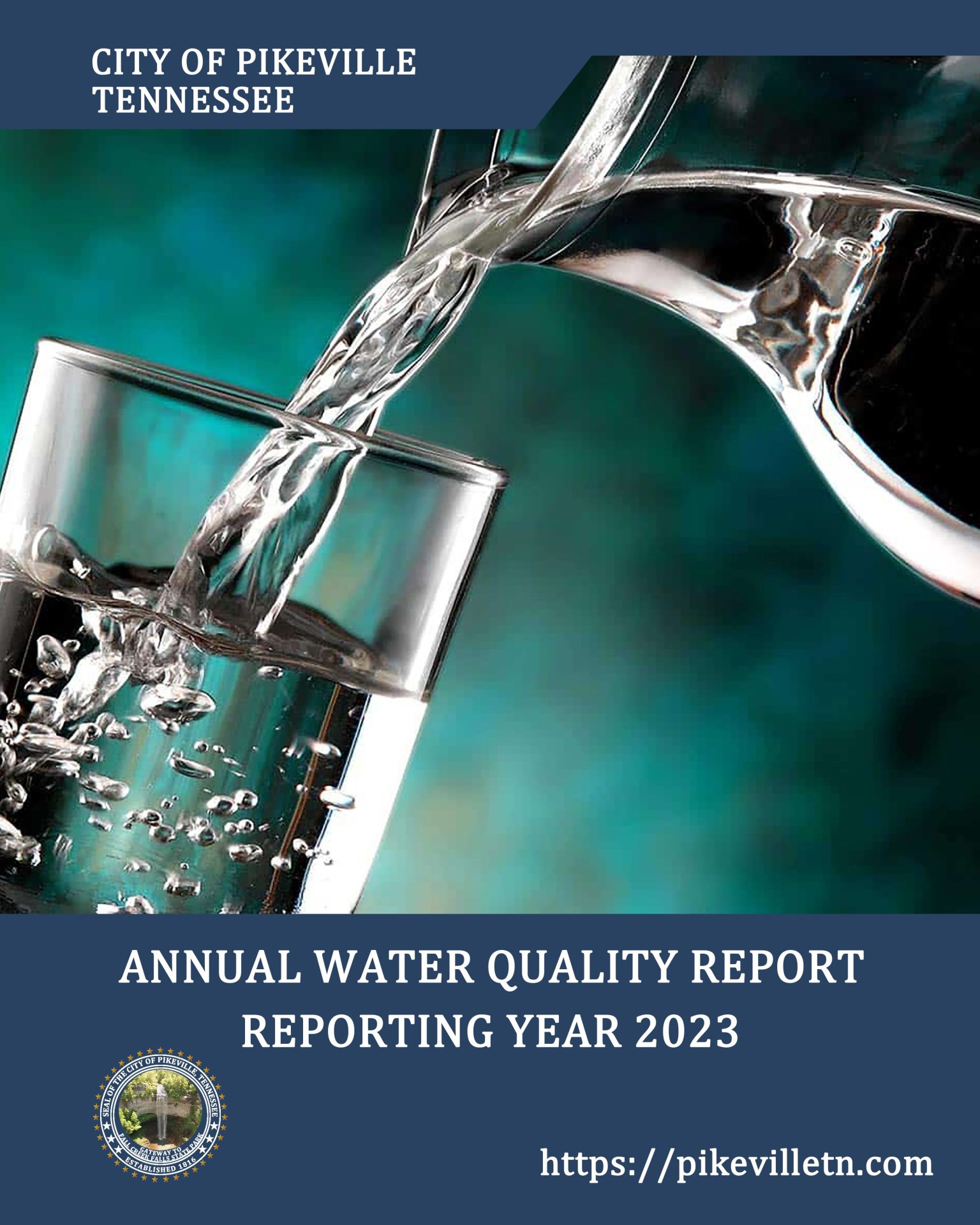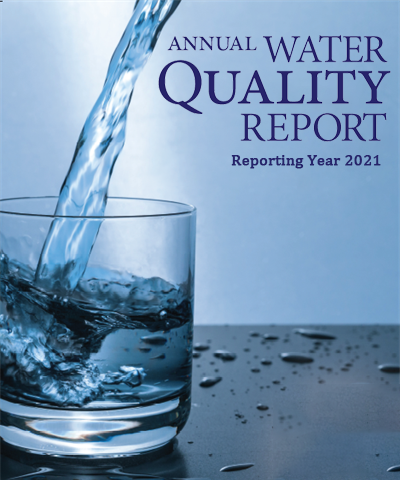City of Pikeville
Water Department

Pikeville Water Department
Lead Awareness
The most common sources of lead in drinking water are lead pipes, faucets, and plumbing fixtures. Certian pipes that carry drinking water from the water source to the home may contain lead. Household plumbing fixtures, welding solder, and pipe fittings made prior to 1986, may also contain lead.
How Lead Gets Into Tap Water
Steps taken during the last two decades have reduced exposures to lead in tap water. These steps include actions taken under requirements of the 1986 and 1996 amendments to the Safe Drinking Water Act and the U.S. Environmental Protection Agency’s (EPA’s) Lead and Copper Rule. Even so, lead in water can come from homes with lead service lines that connect the home to the main water line. Homes without lead service lines may still have brass or chrome-plated brass faucets, galvanized iron pipes or other plumbing soldered with lead. Some drinking water fountains with lead-lined tanks and other plumbing fixtures not intended for drinking water (e.g., lab faucets, hoses, spigots, hand washing sinks) may also have lead in the water.
Lead can enter drinking water when a chemical reaction occurs in plumbing materials that contain lead. This is known as corrosion – dissolving or wearing away of metal from the pipes and fixtures. This reaction is more severe when water has high acidity or low mineral content. How much lead enters the water is related to:
-
-
- the acidity or alkalinity of the water,
- the types and amounts of minerals in the water,
- the amount of lead that water comes into contact with,
- the water temperature,
- the amount of wear in the pipes,
- how long the water stays in pipes, and
- the presence of protective scales or coatings in the pipes.
-
How to find out is Tap Water is Contaminated with Lead
You cannot see, taste, or smell lead in drinking water. The best way to know your risk of exposure to lead in drinking water is to identify the potential sources of lead in your service line and household plumbing. Understand that any work, such as water main or service line replacement, could increase exposure to lead while the work is ongoing and for up to six months after the work is completed. There are also laboratories that are certified to test for lead in water. Water sampling results can vary depending on the time of day, season, method of sampling, flow of water and other factors.
Risk from Lead in Water
Because no safe blood level has been identified for young children, all sources of lead exposure for children should be controlled or eliminated. EPA has set the maximum contaminant level goal for lead in drinking water at zero because lead can be harmful to human health even at low exposure levels. Lead is a toxic metal that is persistent in the environment and can accumulate in the body over time. Risk will vary depending on the individual, the chemical conditions of the water, and the amount consumed. For example, infants who drink formula prepared with lead-contaminated tap water may be at a higher risk of exposure because of the large volume of water they consume relative to their body size. Bathing and showering should be safe for you and your children because human skin does not absorb lead in water.
What to do if you think you or your child has been exposed
If you think that you or your child has been exposed to lead in water, contact your health care provider. Most children and adults who are exposed to lead have no symptoms. The best way to tell if you or your child has been exposed is with a blood lead test. Your health care provider can help you decide whether a blood lead test is needed and can also recommend appropriate follow-up actions if you or your child has been exposed. As levels of lead in the blood increase, adverse effects from lead may also increase.
How to Reduce or Eliminate Exposure to Lead in Tap Water
If you are concerned about lead in water or know that your plumbing contains lead, you can take action to reduce the amount of lead in your drinking water and minimize your potential for exposure.
You can reduce or eliminate your exposure to lead in tap water by drinking or using only tap water that has been run through a “point-of-use” filter certified by an independent testing organization to reduce or eliminate lead (NSF/ANSI standard 53 for lead removal and NSF/ANSI standard 42 for particulate removal). If you have a lead service line, use a filter for all water you use for drinking or cooking.
You can flush your water to reduce potential exposure to lead from household lead plumbing. This is especially important when the water has been off and sitting in the pipes for more than 6 hours. Before drinking, flush your home’s pipes by running the tap, taking a shower, doing laundry, or doing a load of dishes. The amount of time to run the water will depend on whether your home has a lead service line or not, and the length of the lead service line. Drink or cook only with water that comes out of the tap cold. Water that comes out of the tap warm or hot can have higher levels of lead. Boiling will not reduce the amount of lead in your water.
You can virtually eliminate your exposure to lead in water by drinking or using only bottled water that has been certified by an independent testing organization. This may not be the most cost-effective option for long-term use.
Quality Water Reports
Our Quality Water Reports provide comprehensive and detailed information about the drinking water in the City of Pikeville. These reports contain important data about water sources, treatment processes, and any contaminants that may be present in the water supply.
We encourage residents to review these reports and familiarize themselves with the quality of their drinking water. Our priority is to ensure that our community has access to safe and clean drinking water, and these reports help us ahcieve that goal.
Below, are the latest Quality Water Reports for our community to stay informed about the water consumed every day.
Customer Service:
Our Utility Customer Service team is here for you and ready to answer questions regarding your utility account, respond to your emergency, and help you save money. From Payment Options, Starting a New Utility Service, Disconnecting a Utility Service, Transferring a Utility Service, to providing many other resources, For all of your utility customer service needs, please visit our webpage: Utility Customer Service.

25 Municipal Drive
Pikeville, Tennessee 37367




